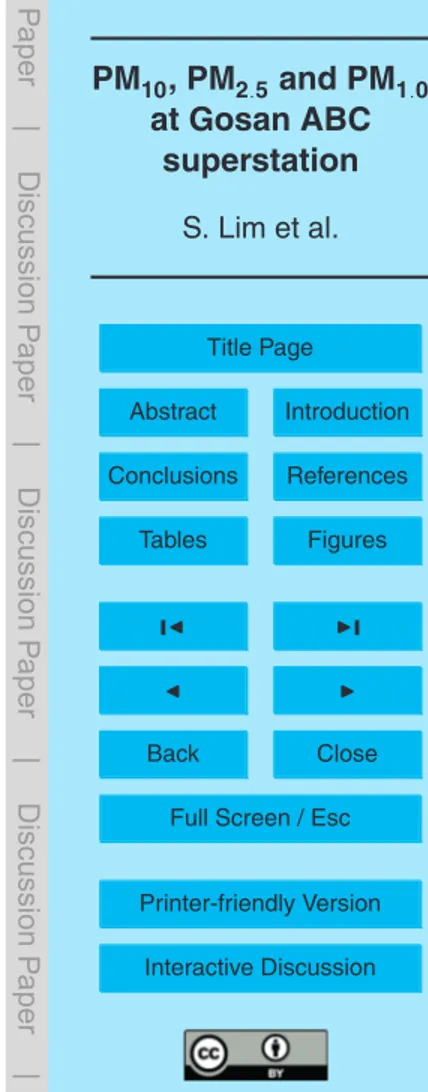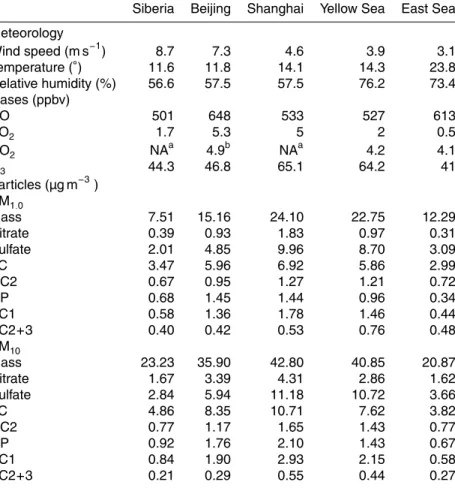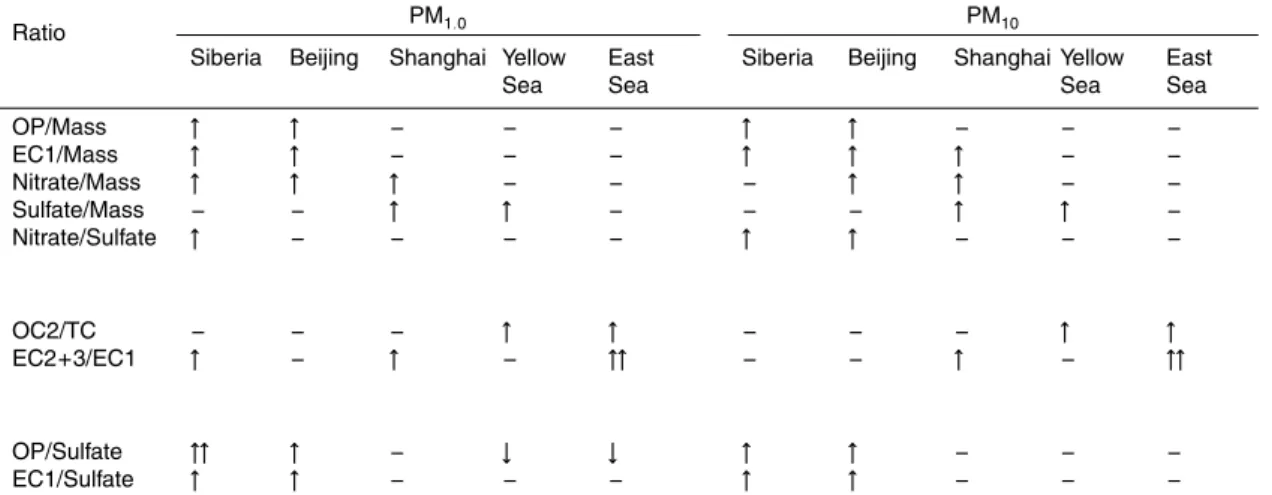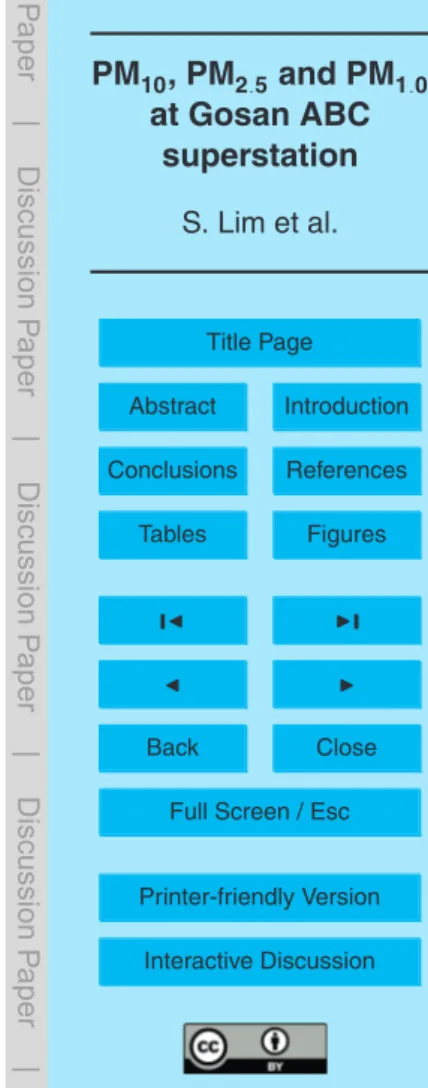Ionic and carbonaceous compositions of PM<sub>10</sub>, PM<sub>2.5</sub> and PM<sub>1.0</sub> at Gosan ABC superstation and their ratios as source signature
Texto
Imagem
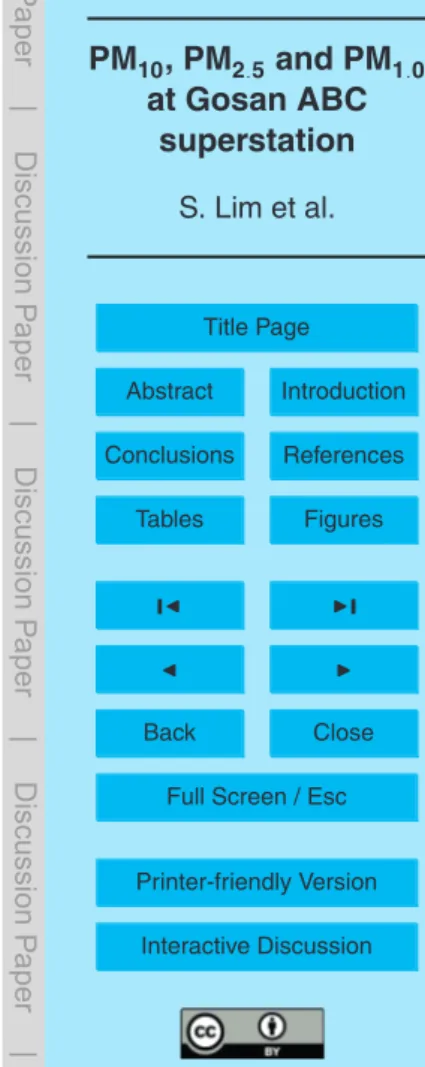


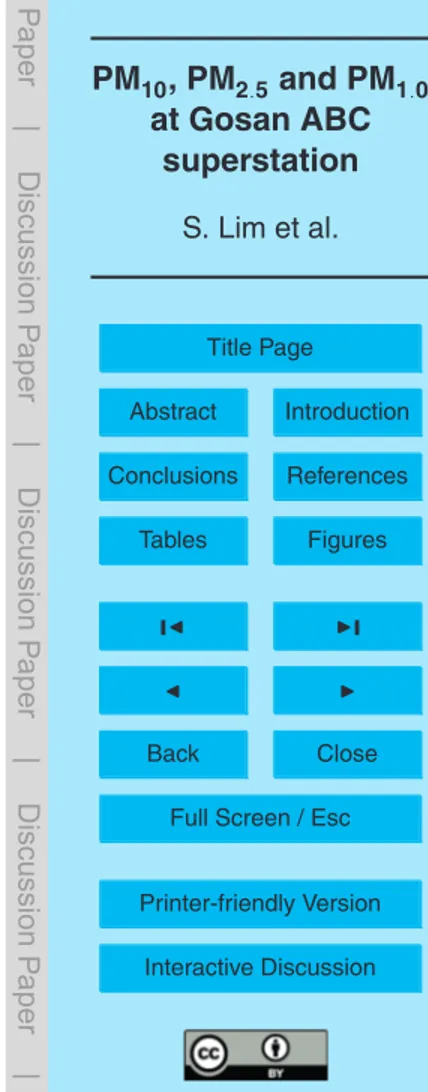
Documentos relacionados
Average relative contribution of inorganic water soluble species to the total PM 10 mass measured by the MARGA during 2012 as a function of total mass concentration. The black line
We report a new method for the simultaneous in situ detection of nitryl chloride (ClNO 2 ) and dinitrogen pentoxide (N 2 O 5 ) using chemical ionization mass spectrometry (CIMS)..
Aerosols at these sites are shown to reflect dust, biomass burning and anthropogenic sources from Europe, South, East and CA, and Russia depending on the time period.... Kulkarni
Triangle plots (a) for day and nighttime source region plumes and (b) for source region averages and for indentified organic groups, i.e., LV-OOA, SV-OOA, OOA and BBOA. The dotted
Time series of daily contributions from each identified source, including soil dust, coal combustion, biomass burning, traf- fic and waste incineration emission, industrial
Continuous sampling of the PM 2.5 aerosol fraction on a daily basis was conducted in Athens (Penteli station, urban background) during a five year period (2008–2013). Sub-
All of these conditions above made the aerosol pollution in Shiji- azhuang become worrying, and the annual concentrations of secondary inorganic ions, OC, EC, and most crustal
At these sites, about 30% of measured organic carbon was found in the coarse mode and was to a certain level attributed to primary biogenic organic aerosol (Puxbaum et al., 2003),
